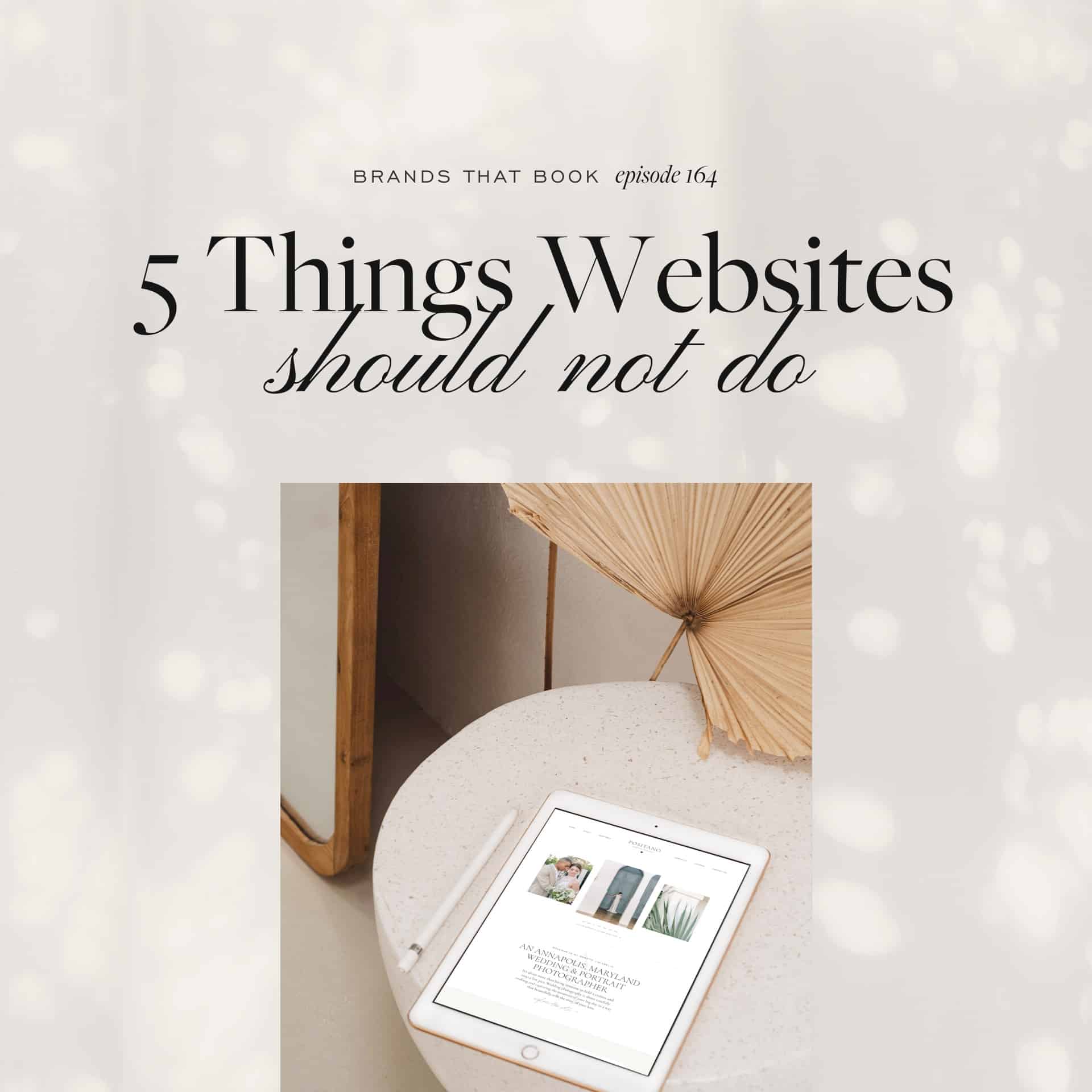There are so many possibilities when it comes to your marketing website.
A well-designed marketing website should streamline and automate aspects of your business. Hopefully you feel that your website does some of the heavy-lifting for you, especially when it comes to lead generation.
There are now so many different tools that can be integrated with a website that make it easy to add endless functionality.
The problem is that it makes it more challenging for many people to do decide what should be included on their website. Over the years we’ve found that just because a website can do something doesn’t mean a website should do something.
The goal of a marketing website is to generate leads. If the tool or feature you’re considering doesn’t help your business generate leads, we don’t think it belongs on a website.
Here are five things that websites can do, but shouldn’t…

5 Things Your Website Can Do, But Should Not…
1. Contract Signing
What you could do: Create PDFs for each client, upload them to the media section of your site, have clients sign them using a browser extension (DocuSign, etc) and then email them back to you.
Or you could use a plugin like Gravity forms to manually build forms and ask clients to sign them. While forms like this are fine for simple contact forms or even job applications, if you’re entering into a legal agreement with someone, you’re going to want something that is more secure and easier to replicate. It’s also nice for people to be able to print contracts and save a copy. A form built on your website will not allow people to do that.
Think about this: even though Gravity Forms stores those forms, if you delete the plugin (or it gets accidentally deleted), you’ll have lost ALL of your contract records.
What to do instead: Dubsado, 17Hats, HoneyBook or another client management system. These systems allow you to create templates that can be easily repeated for clients. They’ve also streamlined the signature process. No need to download clunky files or print contracts for scanning. Everything is saved on their server and not dependent upon a correctly functioning plugin. They even collect payments. Contracts and payments are collected securely and clients are given logins so that they can review contracts at a later date, download copies and check on upcoming payments.
We think they’re well worth the cost.
2. Sending Mass Email Broadcasts
What you could do: There are a few ways to sending mass emails through your site using third party plugins, but sending email this way isn’t reliable. We’ve found that even delivering email from WooCommerce transactions can be tricky without adding an extra plugin to aid in email deliverability (SMPT). For legal reasons, it also needs to be very easy for people to unsubscribe and plugins like this might not allow people to do so – meaning they mark you as spam and hurt your deliverability even more.
What to do instead: Flodesk, Kit or another mass email specific platform. These systems are designed to make collecting email addresses and sending a breeze. They’ll let you segment subscribers into lists, set up automations and so much more. Professional email platforms are also going to help ensure that your emails actually reach inboxes and they’ll give you tools to both grow your list and keep it healthy.
3. Hosting PDFs or Large Files
What you could do: upload PDFs and other files to your media section (for both WordPress + Showit). This is fine for just a few files, but this gets heavy for your site. Especially if you have a lot of files or very large files. Those large files can slow down your site’s load time and even cause it to crash.
What you should do instead: House these large files on something like AWS or Google drive and send links to the files.
4. Gallery Hosting (even saying this makes us cringe!)
What you could do: Create individual pages on your site and use a third party plugin to add all of the images from a wedding or session to a gallery. Or even upload them to your server via FTP. But boy is this going to add a lot of bulk to your site and thus slow it down.
What to do instead: Use a platform that specializes in client galleries. Personally, we’re fans of Cloudspot and Pass. These platforms are designed to load quickly, offer multiple sizes of images, allow clients to place print orders, allow you to easily communicate with clients and so much more.
5. Embedding Videos
What you can do: upload MP4s directly to your site and play the files. On platforms like Showit, this is fine if you’re uploading small (less than 8MB) files that are set to loop in the background of a canvas. But, especially if you’re a WordPress user, you’re uploading full video files to your site, it’s going to slow down very quickly.
What to do instead: Upload video files to YouTube or Vimeo first and then use them on your site. Both WordPress and Showit will allow you to easily embed videos from this platform. WordPress will even let you use a linked video as a background for a section of your site.
Don’t get us wrong: We LOVE automation. We regularly are looking for ways we can streamline our business.
Marketing websites, however, have a specific function: to drive leads to your business. If the tool doesn’t help us drive leads to our website, we don’t feel like it needs to be on our website.
What else do you feel businesses commonly do with their websites, but shouldn’t? Let us know in the comments!









VIEW THE COMMENTS
Add A Comment